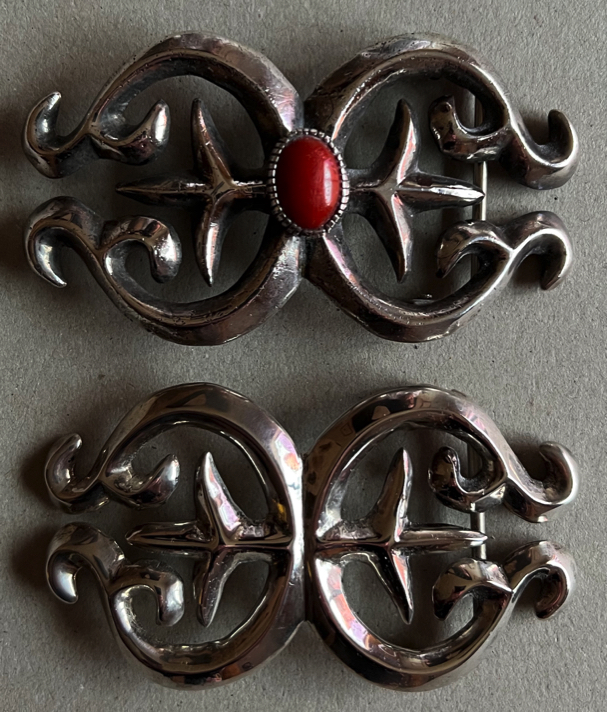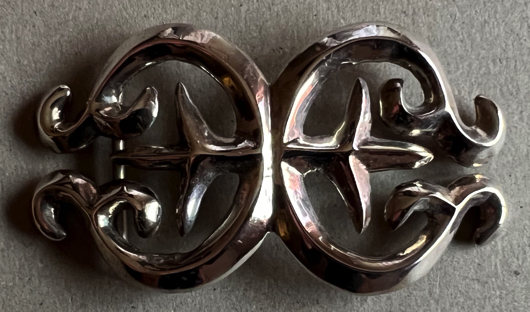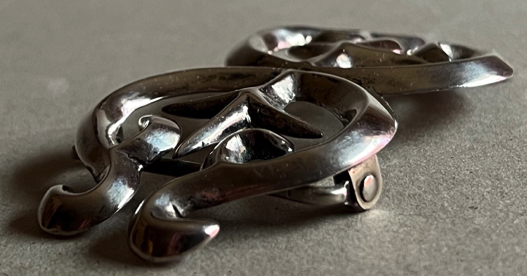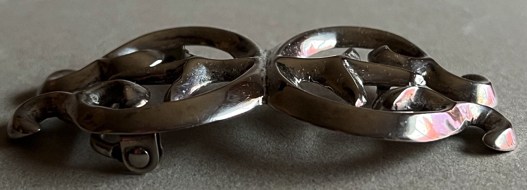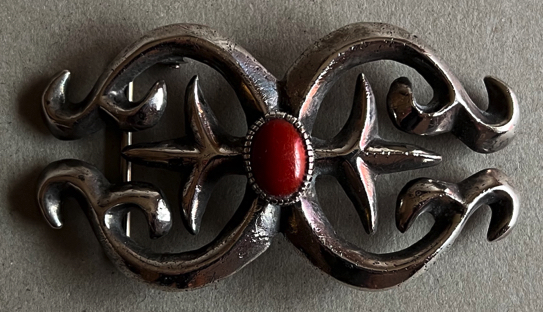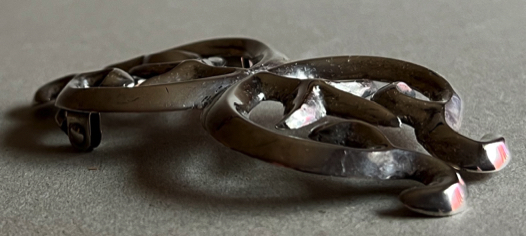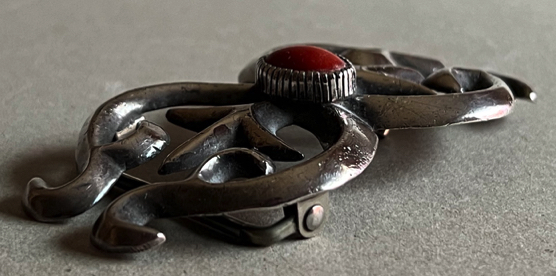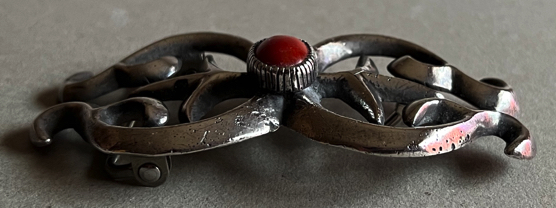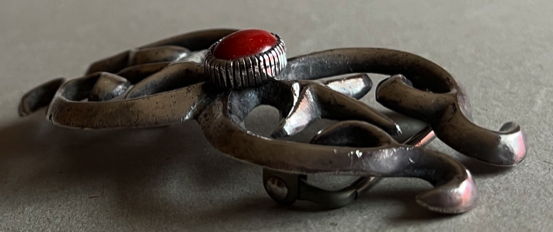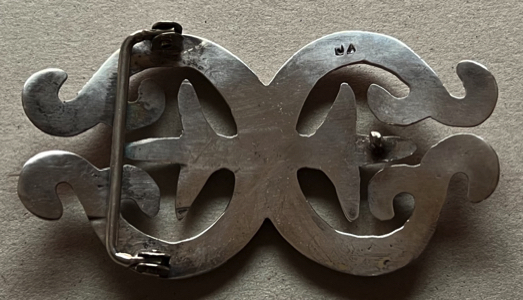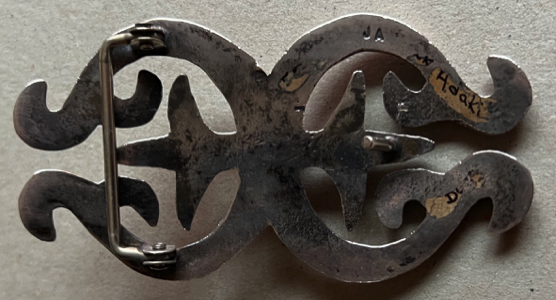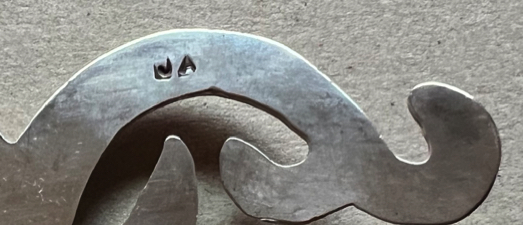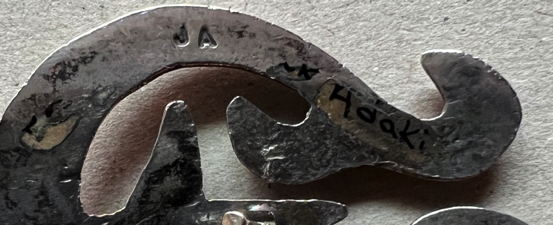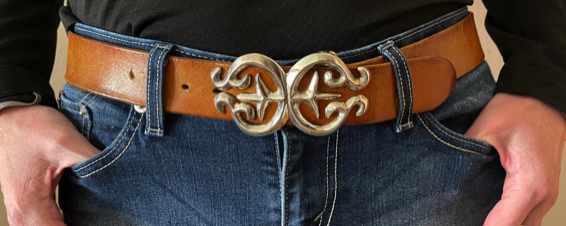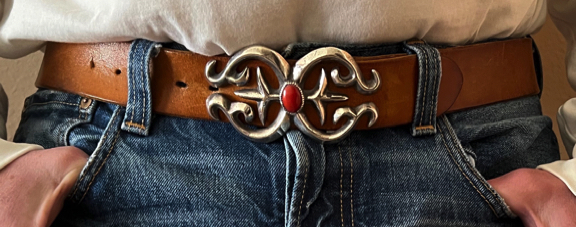
© 2010-2023 by Fine Arts of the Southwest, Inc. All rights reserved.
Unauthorized reproduction or use is strictly prohibited by law.
Two beautiful vintage Navajo tufa-cast silver
belt buckles by Jack Adakai, c.1960’s
This is an interesting and somewhat unusual occurrence, finding two historic tufa-cast silver pieces made from
the exact same carved tufa-stone block. These buckles come from the creative mind and highly-skilled hands of
the outstanding Navajo silversmith, Jack Adakai (active 1950’s-1980).
Although well-known among connoisseurs of fine traditional Navajo jewelry, Jack Adakai is one of the better kept secrets of the 20th century Southwest art world; not at all a household name today in the sense of Native American jewelry legends such as Charles Loloma or Kenneth Begay.
Adakai lived the quiet, rural life of a traditional Navajo way out on the Navajo Reservation at the far edge of western New Mexico in the era before the worldwide web, before smartphones and texting, before Facebook, Google, Instagram and Twitter, before the rise of “superstar” Indian Artists becoming social media and cultural sensations. Were Jack Adakai alive and working today, he might well be one of these himself based on his exceptional artistic abilities.
Adakai worked at various times for the various prominent trading companies in western New Mexico; C.G. Wallace,
Tobe Turpen, M.L. Woodard and he also worked with the Foutz trading family of Farmington and Shiprock, NM. Adakai’s work is characterized by its generally large scale and its excellent mastery of all traditional Navajo silversmithing techniques, such as tufa-casting, fabrication, stamp, chisel and file work. In addition to his own formidable silversmithing abilities, Adakai was also an excellent teacher and mentor in the late 1960’s and early 1970’s to his young clan nephew, the now highly-renowned Navajo silversmith, McKee Platero, who is himself today an international social media sensation. Jack Adakai also taught his own son, the now well-known talented contemporary Navajo silversmith, Ray Adakai.
Back to the particulars of these two marvelous buckles which are completely characteristic Jack Adakai pieces. Tufa-casting is an extremely difficult and demanding technique and Jack Adakai was a superb master caster. The soft tufa stone block is carved in the negative, which is to say that the design is carved into the block so that when the block is subsequently filled with molten silver the resulting cast is a positive. Tufa molds, especially those carved this elaborately usually only last for three or four separate casts before they deteriorate and become unusable.
What is highly unusual here is to find two historic 60 or so year old pieces that were cast from the same tufa block and finished in slightly different ways, one set with a beautiful Meditteranean red coral stone in a finely serrated silver bezel and the other finished in plain unadorned silver. Both pieces are beautiful and are an object lesson of sorts in how Native jewelry is made and finished. Adakai could have originally made a series of three or four these buckles for a trading post in any number of different finishes, adding turquoise or other stones to the other castings. Both of these buckles have the exact same lovely four-part curvilinear designs and both beautifully display the ideal combinations of strength and delicacy which is the hallmark of fine tufa-casting.
The buckles each measure a very nice-sized 3 7/8” in width by 2 1/8” in height. The buckle at left with the coral stone weighs 82 grams or 2 7/8 ounces. This buckle will accept a belt strap of up to 1 1/2” in width. The plain silver buckle
at right weighs 78 grams or 2 3/4 ounces and will accept a belt strap of up to 1 3/4”. Both buckles are in excellent original condition with some amount of age-appropriate wear from use and they are both properly signed “J.A." in
Jack Adakai’s customary capital letters signature on the back.
These buckles are both outstanding and extremely wearable pieces of work by an supremely accomplished artist
who is not as widely famous an artist as he deserves to be, but who is nonetheless held in extremely high esteem by
those who understand and value the finest in traditional Navajo silverwork. Finally, the just-right size of these
buckles guarantees that they would look just as impressive and wear just as easily and well on either a man or woman.
